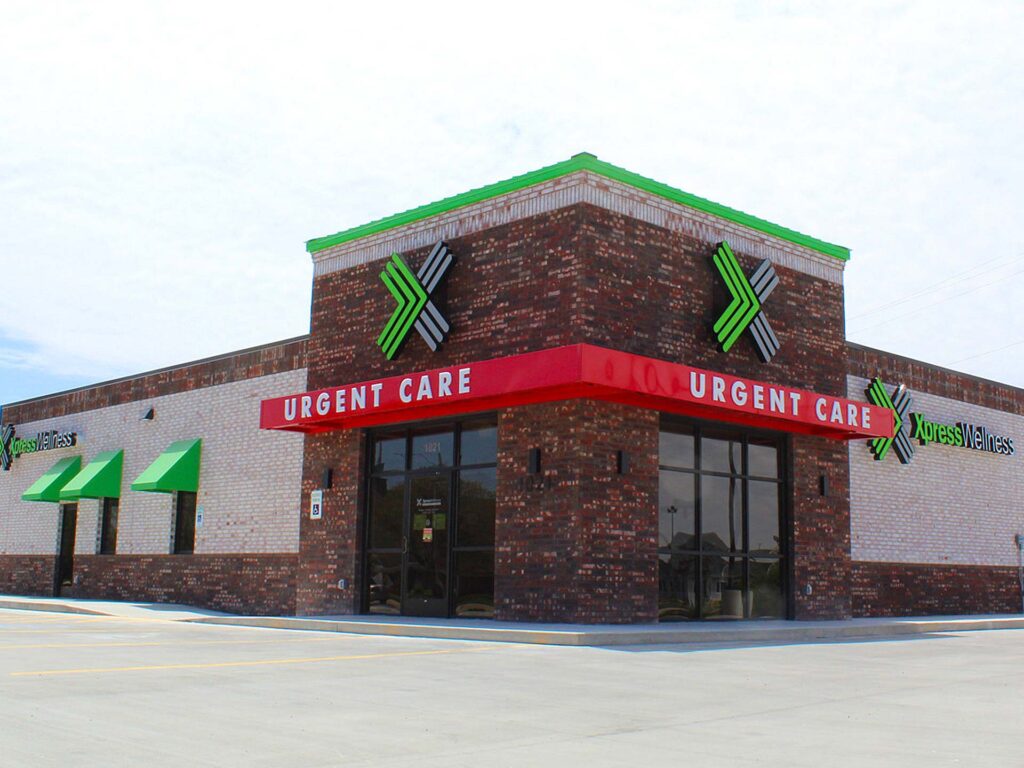How Our Clinic Makes Sure Top-Notch Urgent Look After Every Individual
How Our Clinic Makes Sure Top-Notch Urgent Look After Every Individual
Blog Article
The Importance of Urgent Care Centers in Connecting the Gap In Between Key Treatment and Emergency Providers
Urgent treatment facilities have become a crucial component of the medical care landscape, effectively dealing with the crucial requirement for prompt medical focus without turning to emergency situation solutions. By providing care for non-life-threatening problems, these facilities help to minimize the concern on emergency clinic and enhance patient accessibility to timely therapy. Their expanded hours and diverse solutions cater to a growing populace looking for options to traditional medical care. The evolving duty of immediate treatment facilities elevates essential questions concerning their assimilation within the broader healthcare system and the implications for patient end results and resource appropriation.
Summary of Urgent Treatment Centers
Urgent care facilities have actually become a vital part of the healthcare distribution system, supplying obtainable medical solutions for non-life-threatening conditions. These facilities commonly run outside conventional workplace hours, offering clients a choice to emergency spaces and medical care setups. Individuals looking for immediate care usually existing with concerns such as minor injuries, infections, or ailments that require punctual interest yet do not position a prompt danger to life or limb.
Urgent treatment facilities are staffed by a variety of medical care specialists, including medical professionals, registered nurse experts, and doctor assistants, that are equipped to detect and deal with numerous medical problems. They frequently feature diagnostic devices such as X-ray makers and laboratory solutions, enabling them to give extensive treatment on-site.
The facility of urgent care facilities has actually been affected by the increasing need for prompt medical services in a hectic society, where people might have a hard time to secure visits with primary treatment providers. Consequently, these facilities aim to ease blockage in emergency situation departments, improving general health care performance. Furthermore, immediate care facilities typically work as a bridge in between health care and emergency solutions, making certain that patients obtain appropriate care tailored to their particular medical needs.

Advantages of Urgent Treatment Provider
Accessing prompt medical care is a considerable advantage of urgent treatment solutions. These centers give prompt interest for non-life-threatening problems, properly lowering delay times compared to traditional emergency departments. Clients looking for treatment for small injuries, ailments, or immediate health and wellness issues can get treatment without the long delays usually connected with health center brows through.
Another key advantage is the extended hours of operation. Many immediate care facilities are open nights and weekends, suiting individuals who might not have the ability to see their medical care provider throughout standard office hours. This adaptability makes urgent treatment an available option for those with hectic schedules or unexpected health and wellness concerns.
Additionally, urgent care facilities frequently supply a large range of solutions, including diagnostic screening, X-rays, and basic research laboratory services. This thorough method allows for fast diagnosis and therapy, boosting client contentment.
Furthermore, urgent care facilities are generally extra cost-efficient than emergency spaces, making them an appealing option for people without insurance policy or those with high-deductible strategies. On the whole, immediate care services play a vital duty in supplying available, timely, and economical medical care.
Comparison With Main Care
Commonly, patients usually weigh their alternatives in between immediate care facilities and primary treatment providers when seeking medical attention. Both offer crucial duties in the healthcare system, yet they vary significantly in scope, accessibility, and cost.
Primary treatment carriers are usually the first factor of get in touch with for clients, concentrating on long-lasting health and wellness administration, precautionary care, and persistent illness administration. They supply continuity of care, promoting a patient-provider partnership that permits comprehensive health and wellness evaluations and individualized treatment strategies. Nonetheless, scheduling a visit can be lengthy, often requiring days or weeks in development.
In comparison, immediate treatment facilities supply prompt look after non-life-threatening problems that call for timely interest, such as minor injuries or infections. These centers commonly operate beyond traditional workplace hours, fitting people that may not be able to visit their health care carrier during normal business times. Additionally, urgent treatment is typically more economical than emergency clinic visits, making it an enticing option for those with limited health care access.
Inevitably, while urgent care centers and medical care carriers both contribute to client health, they cater to unique needs, making it crucial for patients to figure out which option ideal aligns with their circumstances.
Emergency Providers Interaction
The communication in between urgent treatment official website centers and emergency solutions is a vital aspect of the medical care landscape, specifically when clients encounter circumstances that might intensify in intensity. Urgent treatment centers act as a bridge between health care and emergency departments, dealing with non-life-threatening conditions that require instant focus. This collaboration boosts patient end results and enhances resource allotment within the medical care system.
When people offer with immediate yet not lethal issues, urgent care centers can effectively manage their demands, reducing blockage in emergency areas. Facilities furnished with diagnostic capabilities can help with prompt recommendations to emergency situation services when a client's condition goes beyond the extent of urgent care therapy. This seamless communication assists ensure that clients receive the suitable degree of treatment without unnecessary delays.
Additionally, efficient communication between immediate treatment carriers and emergency services is vital. Sharing person details and therapy histories promotes worked with treatment, reducing the risk of repetitive tests and procedures. As healthcare continues to develop, the vibrant relationship in between immediate care facilities and emergency situation solutions will certainly play a crucial duty in boosting client treatment efficiency, complete satisfaction, and overall health and wellness outcomes within the area.
Future of Urgent Treatment Facilities
As health care needs develop, the future of immediate treatment facilities is poised to become progressively important to the general medical community (Urgent Care). These facilities are most likely to expand their functions by including innovative technologies, such as telemedicine, expert system, and electronic health record combination. This will boost individual access and improve treatment coordination between urgent care, medical care, and emergency solutions
Furthermore, urgent treatment centers are expected company website to expand their solution offerings to consist of precautionary treatment and persistent illness management. This shift will certainly place them as vital components in managing population wellness, lowering the burden on emergency situation departments, and resolving spaces in primary care accessibility.
The expanding pattern of value-based treatment will even more speed up the makeover of immediate treatment centers, motivating them to concentrate on patient end results and complete satisfaction. Facilities might likewise embrace joint practice models, working closely with professionals and primary care providers to make sure thorough client management.
Conclusion
To conclude, urgent treatment centers offer an essential feature in the medical care system by providing immediate accessibility to treatment for non-life-threatening conditions, effectively minimizing pressure on emergency situation solutions. Their prolonged hours and varied range of solutions enhance patient comfort and fulfillment, while also making certain suitable treatment shipment. As healthcare needs continue to advance, the function of urgent care facilities will likely become progressively significant, more bridging the gap in between health care and emergency solutions.
The establishment of urgent treatment facilities has been affected by the raising demand for timely medical solutions in a fast-paced culture, where patients might battle to secure consultations with key care carriers. Additionally, immediate treatment facilities frequently offer as a bridge in between main care and emergency situation services, guaranteeing that people obtain ideal treatment tailored to their particular clinical requirements.
Several urgent treatment centers are open evenings and weekend breaks, fitting clients that might not be able to see their key treatment company during conventional office hours (Urgent Care). As health care continues to advance, the vibrant connection between immediate care centers and emergency solutions will certainly play a pivotal function in boosting client care performance, contentment, and general health and wellness outcomes within the neighborhood

Report this page